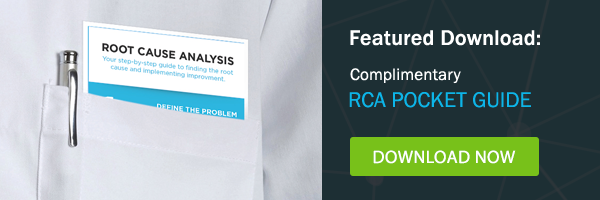
First let’s address implementing change. This could be considered a lifelong study. I’ll cover this succinctly before moving onto problem solving and the root cause analysis pocket guide providing a simple technique for both. If we get the problem solving bit right then implementing change becomes a whole lot easier.
Implementing Change.
On the face of it, humans tend to resist change. Socials scientists accept that people resist only the changes they do not understand, are suspicious of, or consider to be against their interests. People embrace change that seems good for them or the world they live in and care about. So, let’s make sure problem solving creates the needed desire for change. A recommended simple and easy read on the subject of change is ‘Who moved my cheese’ by Dr Spencer Johnson.
Problem Solving.
Most people will agree that when problems surface, a quick, effective solution is needed. Unfortunately, an investigation into the root cause of the problem can take time. Several pitfalls to problem solving can lead to wasted time, frustration and even further failures. These are commonplace difficulties:
Jumping to conclusions. Based on the limited information available the investigator can draw incorrect conclusions and assume the known root cause. Subsequent information that comes available throughout the investigation either supports the theory or highlights an alternative root cause. The latter can often be discarded as unimportant if the information cannot be made to fit the assumed explanation. Factual data is so important.
The Gathering Storm by Winston Churchill ‘I slept soundly and had no need for cheering dreams. Facts are better than dreams’.
Failure to define the problem. Filtering through the often mass of information available that may or may not be related to the problem is never easy. Having the ability to quickly identify and test those critical few possible root causes is an important initial step. All the information may not be easily available and can be complex to filter. The investigator can often struggle to see the patterns in data and a well-defined problem statement is missed before forging ahead to solve the problem.
Action Overkill. Closely linked with the inability to use data to focus on the critical few potential causes to investigate, is the ‘over analyses leads to paralysis’ syndrome. Too much data and tools not used to help analyse data leads to too much choice and a stressful situation for our hero investigator. To move swiftly away from this stressful environment we naturally start to do something. One of my very early managers one said to me; ‘if in doubt walk very quickly and with purpose, holding paper’. This is not a recommended technique. Because the need to do something is so compelling, it is always tempting to take many actions at once, hoping that something will work. The scatter gun approach. The actions taken are rarely checked and tested for effectiveness. If by some chance the problem goes away, no one is truly certain why, and the opportunity to learn and improve has gone only to surface sometime in the future.
To avoid these difficulties we need both of the following (i) access to accurate data and (ii) an effective way of taking action.
An iteration of the attached pocket guide was given to me during the 2nd year of my PhD by a very kind business leader. My only regret is that I didn’t have it earlier. Scientists are not often blessed with the natural communication skills of the creative. What they may lack in people communication skills they make up in abundance their desire to learn and improve. This RCA pocket guide is a simple systemic approach to root cause analysis and a tool for communication. I hope it helps and please feel free to give me feedback on improvements!
Any practitioners wanting more detailed tools and techniques for problem solving on larger commercial projects then Six Sigma and DMAIC is certainly worth considering.






